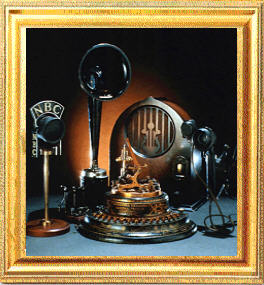 Restoration vs. "Repairs" Restoration vs. "Repairs"
Isn't it interesting how many "Radio Restoration" shops there are these days? They seem to be springing forth straight from the ground. And they probably are. Three important questions you should be asking yourself when you are considering having this sort of work done are what we call "The Three R's":
1. How long have they been around Radio?
2. Do they have References?
3. What do they deem "Restoration"?
The truth is that, nationally, there are only a handful of operations that have been in Radio for a long time (40 years on our part, and on the Web since 1996), have decent references, (we can supply you with many) and know the difference between a repair, a refurbishment, and a restoration. Now, as to the latter:
We only do restoration, not repair. A repair takes care only of those
parts that are out-and-out malfunctioning. Many years ago, in our first few months of operation, we used to perform spot repairs but found out that the sets came back quickly with other old
components burned out. You're dealing with components that are 40, 50, 60 and
in some cases 70+ years old. Piecemeal part replacement usually results in the
remaining weaker and older parts being put under higher electrical demands, and
that means a failure not too far down the road; sometimes a catastrophic one that can damage very hard-to-get components and raise the cost of a restoration higher than it might have
been if the job had been properly done in the first place. We like our clients, but
we don't want to see them in here more often than is necessary! Three slap-dash
repair jobs cost more than one well-done chassis electrical restoration! The approach we take is to replace anything that 1) looks like it's going to fail in the next 10 years, or 2) is more than 20% out of tolerance. It's a philosophy that has served us and our clients well, as we have had only three sets come back for warranty work since 1994.
As far as conservation goes, we always try to protect and defend the conservable, if at all possible and practical. If a set comes in with 85% of it's finish intact, the usual approach is to try to preserve what's left, restore what's gone, and do the best we can to keep the set's original finish elements intact as best as humanly possible. If the finish is more than 40-60% gone, we may have to go for a full refinish. Ultimately, this is a judgement call by the client and ourselves that has to be arrived at through discussion and consultation. Every set is unique, and requires a unique approach.
As a side note, when we started doing this 17 years ago, we went for the "not a fingerprint to be found" approach. This was all very fine until someone walked in and said, "My! what a lovely reproduction!"
Oops.
We quickly realized we had gone a bridge too far.
About the same time I went to a car museum, and had a chat with one of the restoration mechanics; he, too, had the same experience, and noted that everyone had been doing such a "over-the-top" job on everything collectors were beginning to grumble that the cars looked "TOO new." (One visitor kept asking him how he made the fiberglass fenders on the 1908 Diamond Reo.) Research into other fields of restoration revealed that a new ethic was taking hold there as well; it seemed that the proper thing to do was leave a bit of wear here and there to indicate that the article was, in fact, genuine, and not a reproduction.
And so it became with us. When we completely refinish a set, it does NOT look like it was coated with plastic; it looks like a set that has been very well preserved throughout it's life, and has about 5-10 years of light wear on it, generally. We may leave a small bump, a barely visible mar, and we do it to standards that create a finish that looks, like I said, like it's original plus 5-10 years of good service in a well-kept home, not something dipped in plastic.
It's sometimes called "preserving the provenance".
Sometimes, the shinier they are, the phonier they look.
In short, we always treat our clients' radios with the highest level of service, respect and dignity. Yes, it's a more expensive approach, and we don't pretend to be the cheapest. But we do like to think we're the best there is at what we do. As the famous line goes,
"Each part seen and unseen wrought with loving care,
For the Gods see everywhere."
© 1996-2017 by Moonlight Systems
All Rights Reserved
(Click here for Copyright info)
|